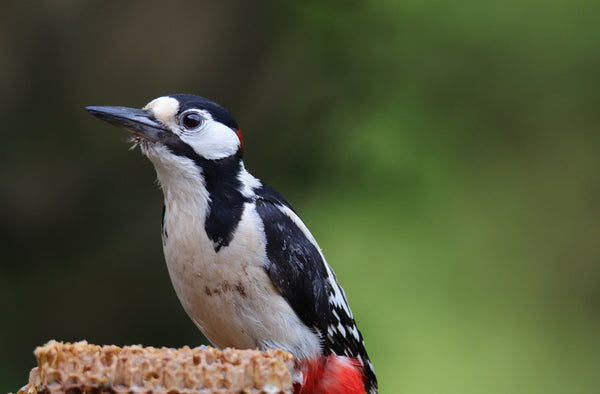The Great Spotted Woodpecker (Dendrocopos major) is a medium-sized bird, and is one of two black and white woodpeckers that can be found in Britain.
Identification is easy to detect as the Great Spotted Woodpecker is about the size of a blackbird with bold black and white plumage and a red patch on the lower belly. Males and young birds also have red markings on the neck or head. The Lesser Spotted Woodpecker is a small bird about the size of a sparrow and has fewer markings under the tail.
The feathers on the Great Spotted Woodpecker are beautiful; they have an all-black pair of central tail feathers, which are very thick and as the pairs go outwards increasing white tips with black marks can be found. The secondary feathers have larger spots of white and under the tail covert it is red, making it look rather elegant and dashing.
The Great Spotted Woodpecker is known to have a very loud call which makes a "tchick" sound. They are also renowned for drumming its bill on a branch; it usually perches on the trunk then works upwards and often from side to side. During the ascent it smartly taps the bark, prising off fragments and frequently extracting food from crevices with the tip of its sticky tongue. It feeds largely on insects, especially ants and the larvae of wood-boring beetles. Holes may be chiselled up to four inches deep. You may be lucky enough to spot them from time to time as they are a bird that can be seen all year round in Parks and Woodlands, especially with mature broad-leaved trees, also mature conifers that will support them.
During severe weather conditions they like to feed on a variety of fruit, seeds and nuts, and they will feed from peanut feeders and bird- tables in large gardens. Also if offered suet feast cakes are real treat for them and are full of nutrition giving them all the goodness they need.
Written by Tina Jakes



